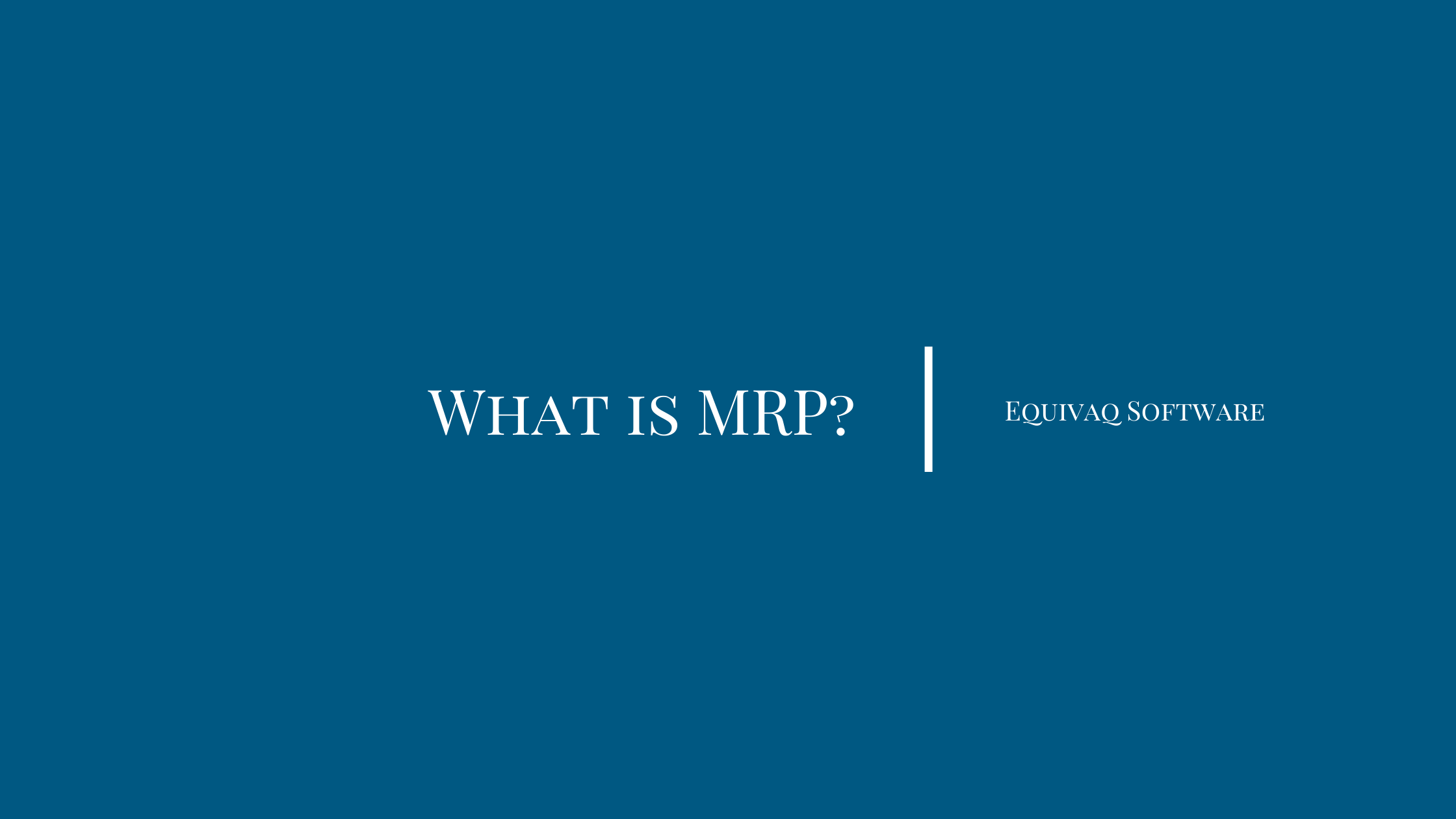Howdy, folks! It's been a while since I've done an educational blog, and with all of the COVID resources I wanted to share out of the way, I figured we should jump into it! This week's blog is going to outline what MRP and ERP are and how they're different (and alike!). It's a lot of good information that can really make a difference in your firm's use of PDM.
The nitty-gritty
MRP is material requirements planning. It's a computer-based inventory management system. Its purpose is to help manage inventory, orders, and production scheduling. It's kind of like PDM for the production department. It is designed to answer what, how much and when things are needed for deliveries. It works backwards, so it starts with the number of finished products that are needed, breaks that down into how many of each sub-assembly will be needed, and then into each part that will be needed.
Sometimes the number of required finished product is an estimate, for example, Apple estimates how many of the new iPhones they will need to have ready to ship to AT&T, Best Buy, and so on. That's not the only way to utilize MRP though, sometimes it can be an exact number. In these cases, firms usually implement a made-to-order strategy, similar to high-end car manufacturer Rolls Royce, who manufacture cars after someone buys them. This business model is much more difficult to maintain, especially in this age of instant gratification, and the level of luxury which Rolls Royce maintains for their brand.
What about ERP?
ERP is enterprise resource planning. ERP covers functions more broadly than MRP. ERP includes accounting and finance, sales and marketing, human capital management (HCM), customer relationship management (CRM), risk management, purchasing, inventory, distribution, and quality management. ERP covers everything that MRP and PDM don't in the rest of the business operations. One of our favorite and most used features of an ERP system is routings. What are ERP routings? They're bills of labor! It documents the steps required, workers, tools, and time estimated to make a product. It's your comprehensive breakdown of "how much time, money, and resources will this project take?" They work hand in hand with MRP systems. Think of ERP as doing central collection of data for wide distribution. ERP brings order to chaos from the CEO's desk all the way down to production.
-1.jpg?width=509&name=Untitled%20drawing%20(2)-1.jpg)
So it's like a triangle. ERP is at the top and covers the most, then PDM and MRP branch from there and cover design and production more specifically, respectively. ERP covers the most, but it's more like the foundation to get things organized and ready for other more specific systems to lay on top, like MRP and PDM.
There's a lot going on here
As always, there's a ton of things to learn! Hopefully you learned something new today, I know I did. There's a lot of confusion and overlap between PDM, MRP, and ERP, but at the end of the day, they can all work cohesively to make your firm's functions smooth and beautifully cooperative.
We're shocked that summer is almost over, it still feels like time has barely moved since quarantine! We hope you're doing well. Let us know if you have any questions, and schedule a meeting here if you just really want to talk to Tim.




 EQUIVAQ SOFTWARE offers Apps to enhance the lives of SOLIDWORKS PDM Administrators and users by offering advanced PDM Add-in Apps for an affordable monthly license fee in order to bring PDM automation within reach.
Our products are straight forward and come with detailed easy setup instructions to get you started.
EQUIVAQ SOFTWARE offers Apps to enhance the lives of SOLIDWORKS PDM Administrators and users by offering advanced PDM Add-in Apps for an affordable monthly license fee in order to bring PDM automation within reach.
Our products are straight forward and come with detailed easy setup instructions to get you started.